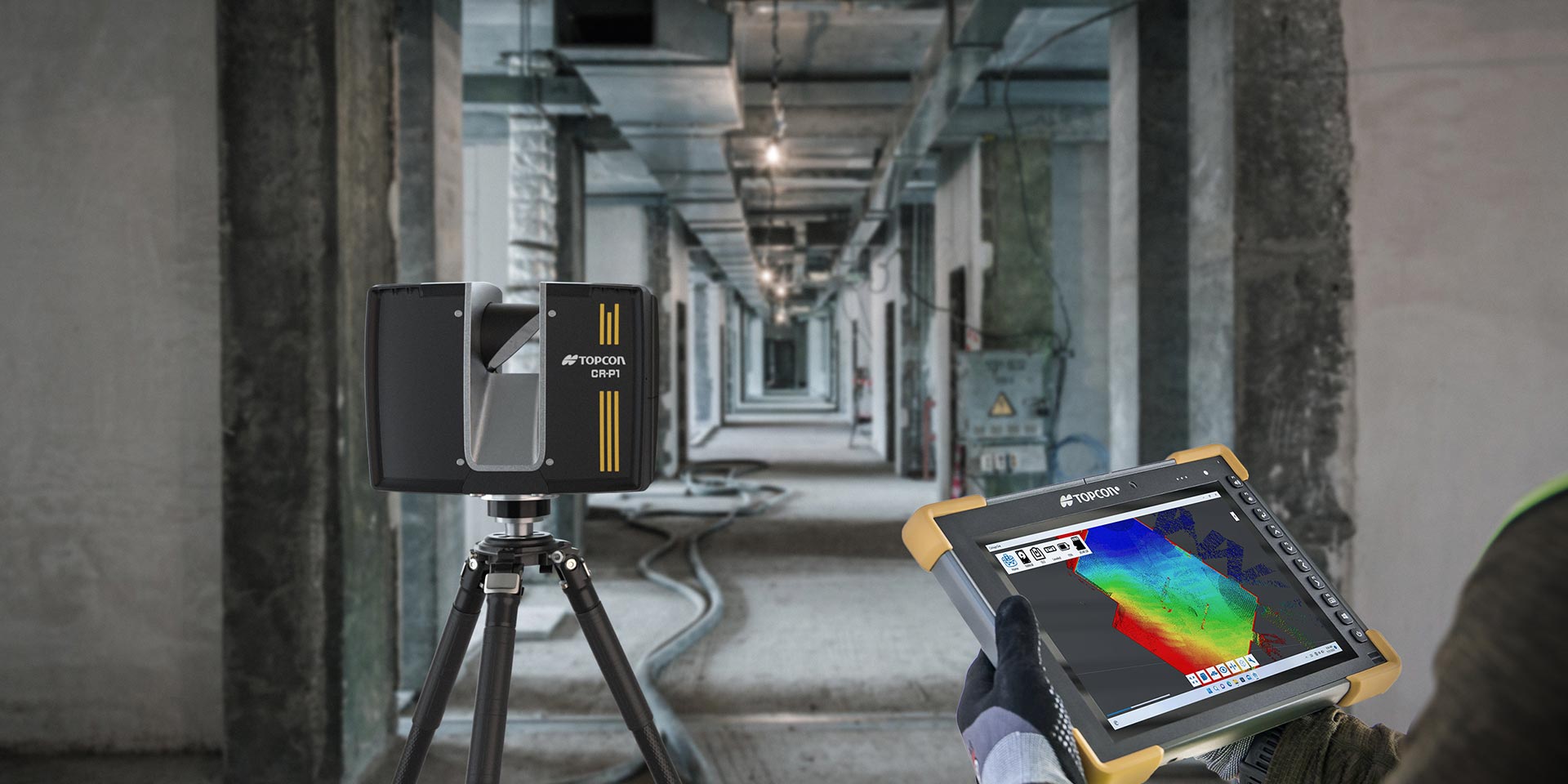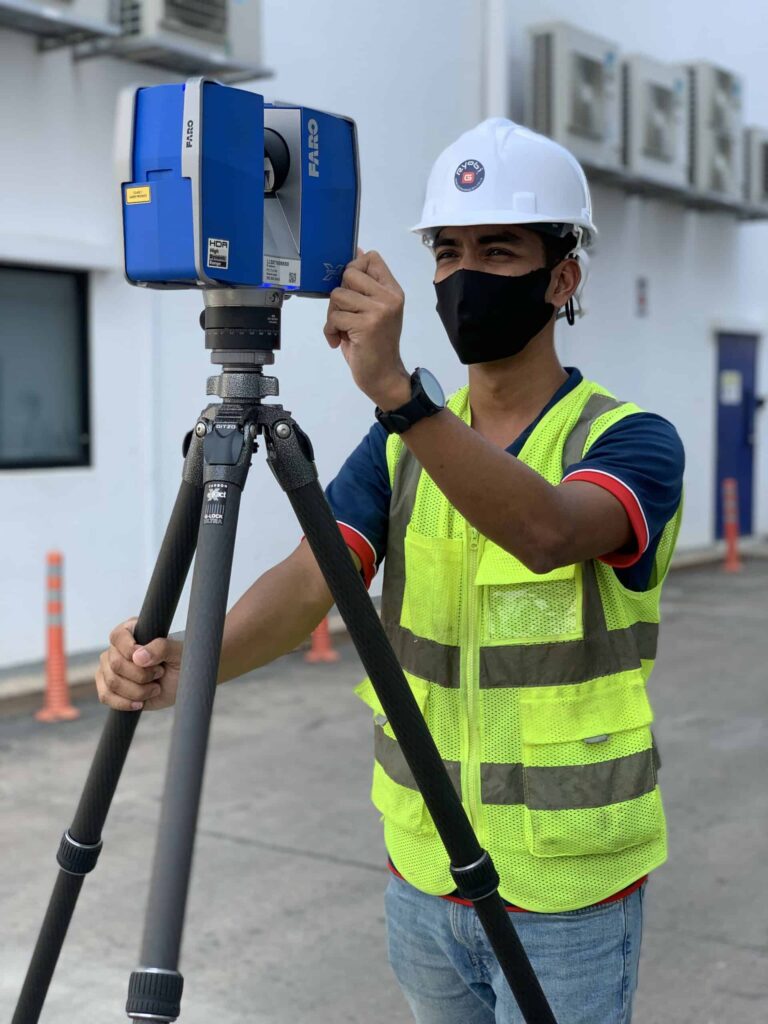Enhancing Manufacturing Processes: The Influence of 3D Laser Scanning on High Quality Control
3D laser scanning innovation is changing high quality control in production. By supplying exact dimensions and high-resolution information, it makes it possible for manufacturers to recognize inconsistencies from specs easily. This development not only simplifies assessment processes however additionally enhances operational performance. 3D Scanning. The application of this technology comes with its very own collection of obstacles. Checking out these elements exposes the wider implications for sectors and the future landscape of manufacturing

Understanding 3D Laser Scanning Technology
3D laser scanning modern technology has developed significantly in recent years, its fundamental concept continues to be simple: recording the accurate geometry of items using laser beams. This innovation uses laser light to determine distances between the scanner and different points on an item's surface area. The information gathered is then refined to create a thorough 3D design, precisely showing the dimensions and shapes of the scanned item.
Generally, 3D laser scanners can be classified right into two major types: get in touch with and non-contact scanners. Get in touch with scanners physically touch the item to gather measurements, whereas non-contact scanners utilize laser beams to catch data from a distance. The convenience of this innovation allows its application throughout various industries, including architecture, building and construction, and production. Its capacity to create high-resolution models promotes quality assurance, reverse design, and quick prototyping, ultimately improving style accuracy and performance in production processes.
Advantages of 3D Laser Scanning in Manufacturing
As manufacturers look for to improve efficiency and precision in their procedures, the benefits of 3D laser scanning have become increasingly evident. This ingenious technology enables for extremely exact and rapid measurements of complicated geometries, substantially minimizing the moment needed for quality checks. By catching comprehensive data, makers can recognize inconsistencies early in the manufacturing procedure, thereby decreasing waste and rework expenses.
Moreover, 3D laser scanning helps with far better style recognition, allowing engineers to compare as-built problems with initial specifications. This capability ensures that any type of deviations are without delay dealt with, improving total item quality. Furthermore, the technology sustains the development of electronic doubles, which can be made use of for simulations and process optimizations. Therefore, makers not just enhance their operational efficiency but likewise enhance their competitive advantage out there. On the whole, the assimilation of 3D laser scanning represents a transformative step towards attaining higher criteria in manufacturing quality control.
Combination of 3D Laser Scanning Into Quality Assurance
Integrating 3D laser scanning into quality assurance procedures improves the accuracy and effectiveness of assessments throughout manufacturing. This modern technology makes it possible for manufacturers to record in-depth, high-resolution data of settings up and components, enabling for exact dimensions and comparisons versus layout specs. By using 3D laser scanning, organizations can recognize discrepancies from tolerances more properly, which is essential for maintaining product integrity.

Real-World Applications and Case Studies
Real-world applications of 3D laser scanning in manufacturing demonstrate its transformative impact throughout numerous sectors. Aerospace firms use this innovation to conduct precise inspections of parts, guaranteeing they satisfy stringent safety criteria. A remarkable instance included a leading aircraft supplier that used 3D laser scanning to enhance its high quality control processes, substantially lowering assessment times and errors.
In the automotive field, makers have implemented laser scanning to produce electronic doubles of their cars, making it possible for real-time changes during production. One auto company reported a 30% decrease in rework costs after incorporating this innovation right into their setting up lines.
In the consumer items industry, business are using 3D laser scanning for fast prototyping, allowing for quicker models and enhanced item designs. These applications show how 3D laser scanning not only improves accuracy yet also improves efficiency and innovation across multiple manufacturing domain names.
Conquering Obstacles in Implementation
Carrying out 3D laser scanning in manufacturing presents a number of obstacles that organizations should browse to completely understand its benefits. One considerable hurdle is the first cost of devices and software, which can prevent companies from adopting this modern technology. Additionally, integrating 3D laser scanning right into existing operations requires getting over resistance to change amongst employees, requiring extensive training programs to ensure proficiency. Information monitoring additionally presents a challenge, as the high volume of information produced by 3D scanning must be effectively processed and examined to obtain actionable insights. Furthermore, compatibility problems with tradition systems may hinder seamless integration, demanding potential upgrades or alterations. Addressing these obstacles is essential for manufacturers intending to boost quality assurance and enhance production procedures. By creating clear methods for training, financial investment, and data management, companies can minimize these barriers and launch the transformative capacity of 3D laser scanning in their operations.
Future Fads in 3D Laser Scanning for Production
As producing continues to develop, the assimilation of 3D laser scanning with raised automation is anticipated to change production procedures. Boosted information analytics will certainly play a crucial duty in maximizing process and improving quality control. These patterns highlight the capacity for higher efficiency and precision in manufacturing atmospheres.

Enhanced Automation Integration
The combination of automation in production has actually been steady, the future of 3D laser scanning is positioned to increase this trend significantly. As producing processes end up being progressively complicated, the need for specific, real-time dimensions expands. 3D laser scanning technology provides automated data capture, decreasing labor expenses and reducing human error. This combination permits suppliers to streamline quality assurance processes, making it possible for rapid detection of deviations in manufacturing. Furthermore, the positioning of 3D laser scanning with robotics and automated systems helps with seamless procedures, boosting general efficiency. As manufacturers look at this web-site take on these sophisticated innovations, they can expect better accuracy and productivity, placing themselves competitively in a swiftly progressing market. The synergy in between automation and 3D laser scanning marks a significant jump ahead in manufacturing innovation.
Boosted Data Analytics
The assimilation of automation has actually led the way for improvements in data analytics within the domain name of 3D laser scanning. Makers are increasingly leveraging innovative algorithms and machine understanding methods to analyze huge datasets generated by laser scans. This boosted data analytics capacity enables for real-time monitoring of producing processes, allowing the identification of flaws and deviations a lot more effectively than standard methods. Anticipating analytics can visualize possible issues, substantially reducing downtime and boosting overall performance. Furthermore, the capability to envision data in 3 measurements provides much deeper insights into manufacturing workflows, promoting far better decision-making. As 3D laser scanning technology proceeds to evolve, the function of data analytics will certainly become significantly important in driving innovation and keeping affordable advantage in production.
Regularly Asked Questions
What Industries Benefit the Many From 3D Laser Scanning?
The industries that benefit most from 3D laser scanning include production, building and construction, aerospace, auto, and medical care. These fields use the innovation for precision measurements, quality assurance, and reliable layout procedures, significantly improving total functional effectiveness.
How Does 3D Laser Scanning Contrast to Typical Dimension Techniques?
3D laser scanning provides higher precision and rate contrasted to conventional measurement approaches. It records in-depth geometries rapidly, decreasing human mistake and assisting in much better analysis, which inevitably improves overall quality control in numerous sectors.
What Is the Price of Carrying Out 3D Laser Scanning Technology?
The price of carrying out 3D laser scanning innovation varies substantially, normally ranging from $10,000 to $100,000, depending upon software, training, and i was reading this tools. Organizations has to consider these costs versus prospective performance and high quality improvements.
Exist Specific Software Application Requirements for 3D Laser Scanning?
Yes, 3D laser scanning needs specific software program, including information processing and modeling applications. Typical selections include CAD software application, point cloud handling devices, and specialized applications that help with the assimilation and analysis of scanned data for excellent results.
How much time Does a Normal 3D Laser Scanning Refine Take?
A typical 3D laser scanning procedure can take anywhere from a few minutes to numerous hours, relying on factors like the size of the item, intricacy of the environment, and needed degree of information for precision.
3D laser scanning technology is transforming quality control in manufacturing. 3D laser scanning innovation has actually progressed substantially in current years, its basic concept remains straightforward: capturing the accurate geometry of items making use of laser beams. Integrating 3D laser scanning into quality control procedures boosts the precision and performance of inspections throughout production (3D Scanning). 3D laser scanning modern technology supplies automated information capture, lowering labor prices and decreasing human mistake. The expense about his of carrying out 3D laser scanning innovation varies considerably, usually ranging from $10,000 to $100,000, depending on software application, devices, and training